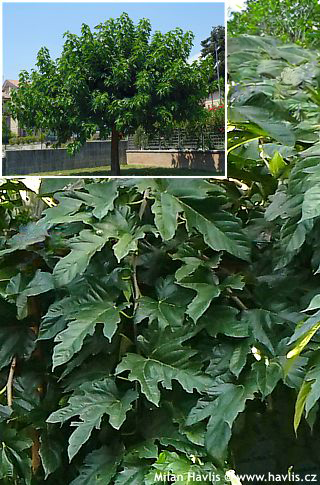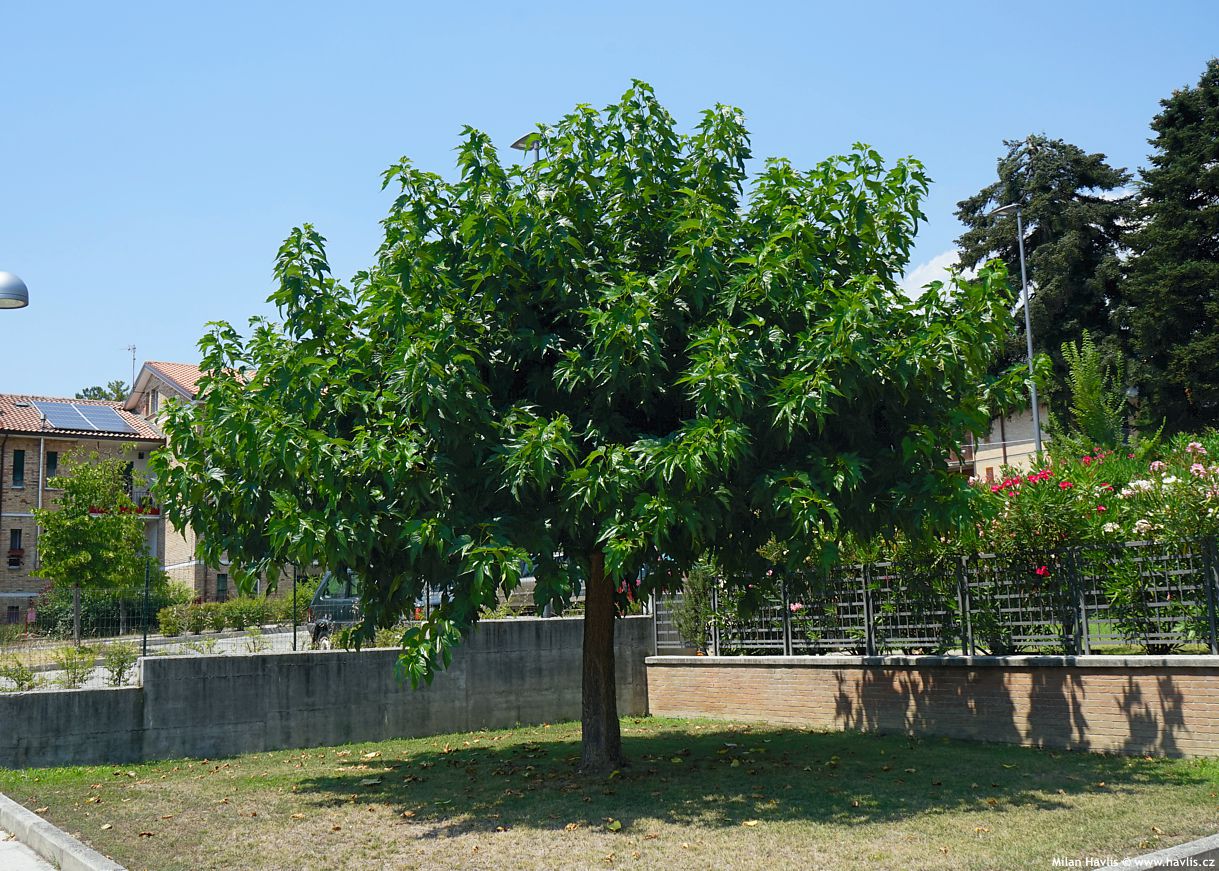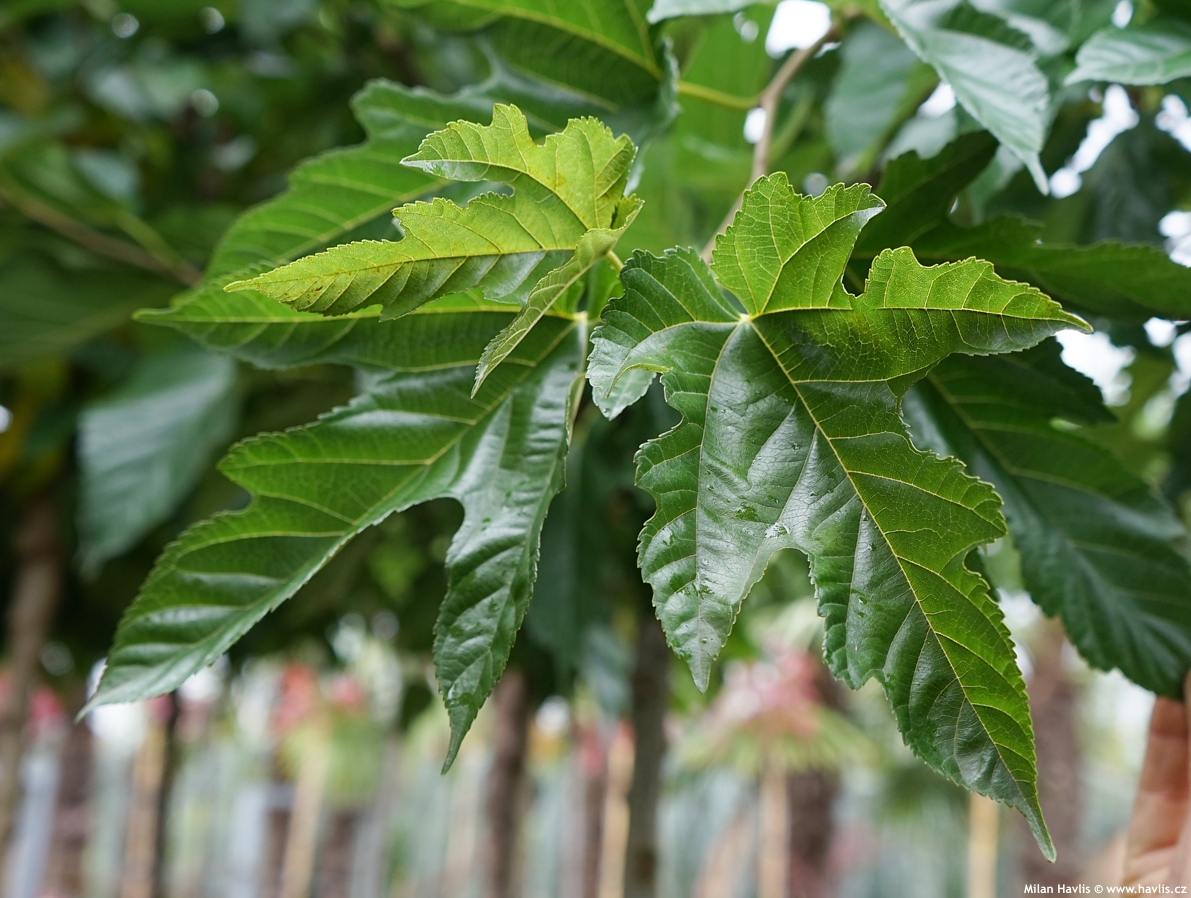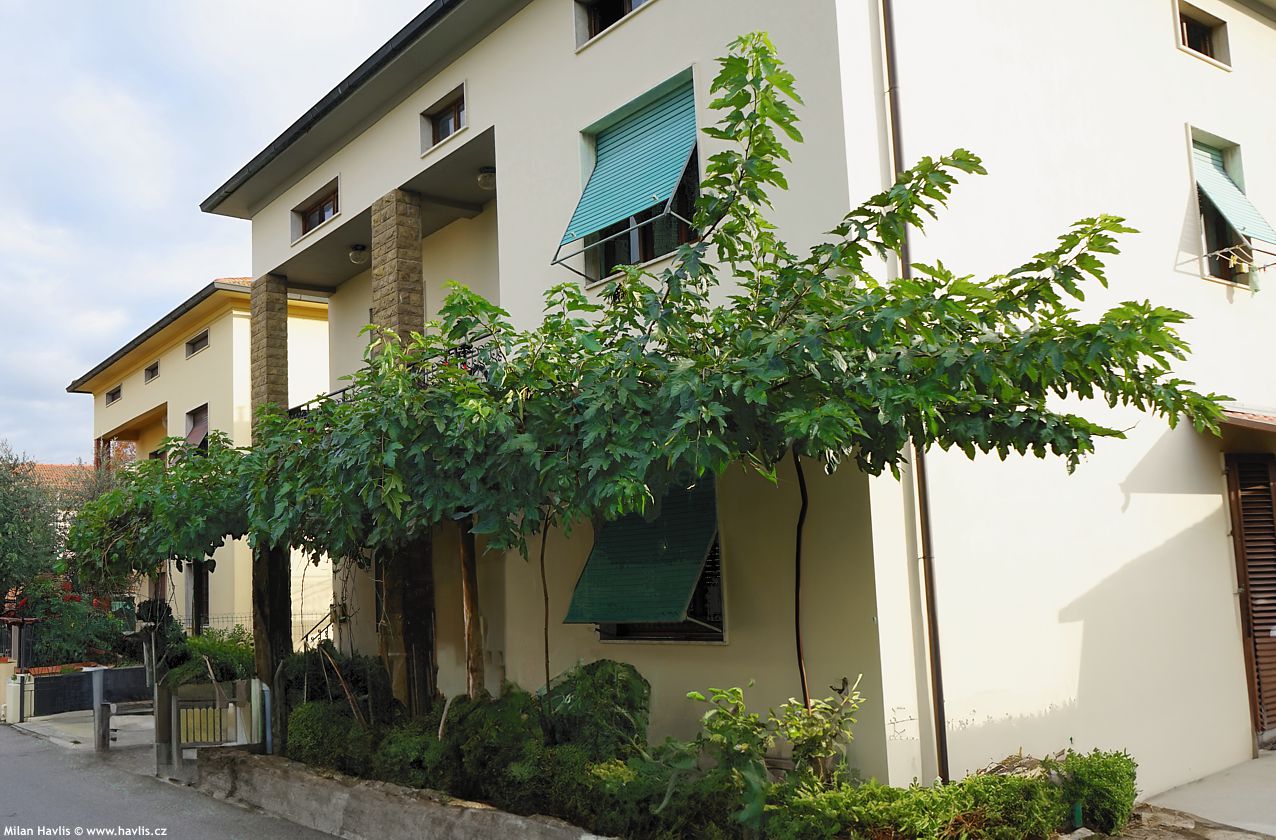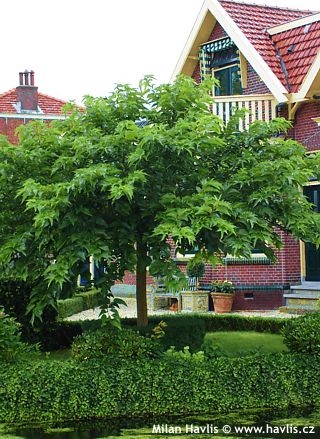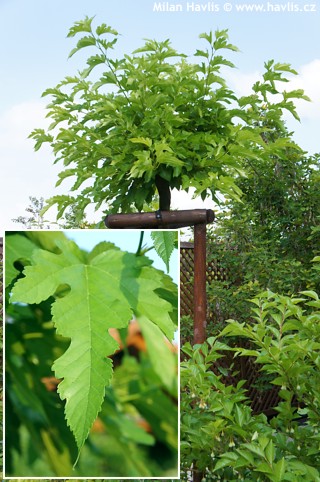Morus alba ('Platanifolia Fruitless') 'FRUITLESS' white mulberry, plane-leaved mulberry


Morus
White mulberry is considered to have originated in China but its natural distribution is widespread all around mild and subtropical parts of Asia including India. We, Europeans, know it, too, as it has been cultivated from the ancient times. For instance, Dalmatian orchards were famous for growing large fields of mulberry trees for production of sweet fruits that contained not only sugars but also vitamins and minerals highly beneficial to human health. And since the berries were easily dried, people could store a sufficient stock of healthy food until the next harvest. No wonder mulberry is now rated a superfood. In the warmest areas, it is cultivated as a farm for silkworms from whose fibers (excreta) 95% of all commercial silk is produced.This variety does not grow very tall and makes a an impressive, spreading, umbrella-like canopy. You can often find a rather romantic bench under the tree where you can enjoy relieving shade in summer heat. Shape, size, and growth rate of the canopy depends on pruning. If you cut back previous year’s growths by up to 80 %, leaving only some 20 cm of the branch length, the tree will make long new branches (50-120 cm) and deeply lobed leaves with be larger and appear earlier in the season. The canopy will be more horizontal with slightly drooping branch ends. Do so in early spring after the worst frosts but before the buds begin to swell. Unpruned it will grow about 30 cm per year both in height and spread and the canopy will be dome-shaped.
White mulberry loves sunny and warm places, yet it is very cold tolerant. It will grow in almost any well-drained soil, but will grow faster and be healthier in deep, moderately fertile, neutral to alkaline soil. It does not mind heavy clay deeper in the ground. Newly transplanted trees need a strong support (staking) for the first 3-4 years before they establish and keep the area above roots turf-free and preferable mulched during this period. It has shallow roots that do not disturb foundations or pavements but does not tolerate road salt. It is considered middle-aged, and its life span is often compared to that of humans. Reliably hardy to -34 °C and tolerates temporary fluctuations down to -37 °C if it has mature wood. (USDA zone 4-5).
Last update 07-02-2024
Goods are shipped all over Europe. For Russia and U.K. and for further details please read about SHIPPING OPTIONS HERE.
Are you interested in a serious discount for orders NOV-FEB? Check your options here.
THE PRICES INCLUDE VAT of 15%. For quick conversion you can use 1 CZK = approx. 0.04 EUR
- STANDARD QUALITY - Plants of this group are 1st class quality with number of branches and overall density adequate to their size and age, considering they were container grown.
- DE LUXE QUALITY - This label guarantees a luxurious quality of manually selected plants that, compared to their height and age, are exceptionally dense and beautiful.
- EXTRA - These plants are usually mature and bigger specimens with exceptional overall appearance.
- STANDARD (as described in the plant form) means a tree with a trunk of 190-210 cm and a crown at the top, unless specified differently. The commercial size for trees is their girth measured in the height of 1m from ground.
- HOBBY - These plants are of the same quality as our standard-quality plants but younger and therefore cheaper.
- SHRUB - a woody plant with branches growing bushy from the ground level.
- HALF-STANDARD or MINI-STANDARD - a small tree with shorter trunk, its size is usually specified.
- FEATHERED - These are trees with branches growing already from the base of the trunk and up along the stem.
- GRASSES and PERENNIALS - Sizes given usually read the diameter of the pot or the clump, as specified.












